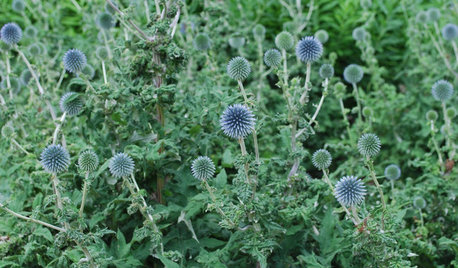Pre-emergent herbicide for perennial beds?
lilydude
11 years ago
Featured Answer
Comments (9)
Karchita
11 years agooliveoyl3
11 years agoRelated Professionals
West Milford Landscape Architects & Landscape Designers · West Milford Landscape Architects & Landscape Designers · Camas Landscape Architects & Landscape Designers · Tomball Landscape Architects & Landscape Designers · Washington Landscape Architects & Landscape Designers · Wakefield Landscape Contractors · Annandale Landscape Contractors · Siloam Springs Landscape Contractors · Winchester Landscape Contractors · Selma Landscape Contractors · Clearfield Landscape Contractors · Diamond Bar Fence Contractors · Hutto Fence Contractors · West Covina Fence Contractors · Woodland Hills Fence Contractorsgardengal48 (PNW Z8/9)
11 years agooliveoyl3
11 years agobotann
11 years agoEmbothrium
11 years agobotann
11 years agoCharles Coderre
3 years ago
Related Stories

GARDENING GUIDESWeed War: When and How to Use Chemical Herbicides
Before you spray, arm yourself with knowledge about which weed killers — natural or synthetic — are right for your yard
Full Story
PLANTING IDEASWant a More Colorful, Natural Garden? Try a Perennial Meadow
Spend less time tending and more time taking in the sights by improving on Victorian and prairie garden designs
Full Story
GARDENING GUIDESNew Ways to Think About All That Mulch in the Garden
Before you go making a mountain out of a mulch hill, learn the facts about what your plants and soil really want
Full Story
GARDENING GUIDESUnleash Your Guerilla Gardener
Toss some seed bombs around the yard for easy, beneficial plantings
Full Story
GARDENING GUIDESGreat Design Plant: Globe Thistle
Trot out globe thistle in a sun-drenched garden spot for strikingly sculptural blue flowers through October
Full Story
EARTH DAYThe Case for Losing the Traditional Lawn
Work less, help the environment and foster connections by just saying no to typical turf
Full Story
GARDENING GUIDES10 Tips for Beginning Gardeners
With a simple sketch, basic tools and the right plants, you’ll be on your way to growing your first flowers or edibles
Full Story
GRASSESHow to Rock a Lawn
Weekend Project: The key to healthy grass begins with the soil. If turf works for you, here’s how to fix it and keep it looking its best
Full Story
FRONT YARD IDEASBefore and After: Front Lawn to Prairie Garden
How they did it: Homeowners create a plan, stick to it and keep the neighbors (and wildlife) in mind
Full Story
GARDENING GUIDESGarden Myths to Debunk as You Dig This Fall and Rest Over Winter
Termites hate wood mulch, don’t amend soil for trees, avoid gravel in planters — and more nuggets of garden wisdom
Full StoryMore Discussions








buyorsell888